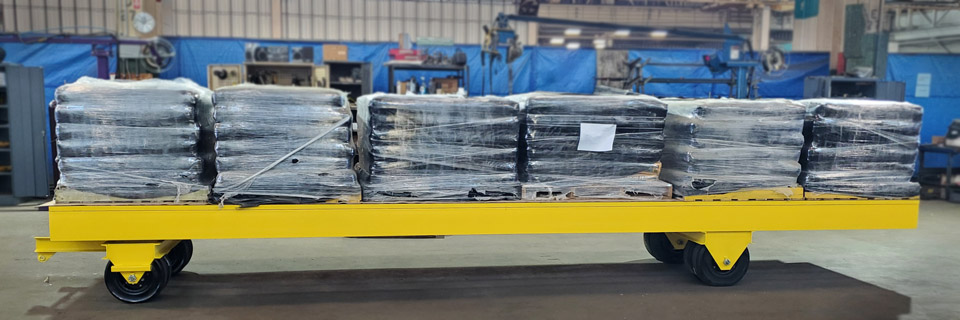You wouldn’t trust your brand new 75-inch smart TV to rest on that IKEA console you saved from college, would you? Well the same goes for our customers with mission-critical cargo (think aerospace and defense industries). They count on Hamilton custom trailers to move their precious industrial hauls safely and efficiently from point A to B. But sometimes, they need a little extra assurance that everything will operate according to plan. And we’re happy to oblige.
That’s why, from time to time, Hamilton conducts load testing. When customers request a load test, they usually have certain criteria they want addressed. It could be as simple as placing the load on the finished product. Or they might ask for specifics like measurements, drawbar forces, and weld inspections. But we can do all types of tests, including:
Simulated tests using Finite Element Analysis (FEA). FEA gives us the ability to perform virtual tests before the product is built. This not only helps to pressure test our design feasibility but ensures the most efficient use of our materials.
Actual load tests done in our testing lab. Using our lab equipment, we test our casters and wheels under strict criteria. For example, we can test for deflection under certain loads, along with push/pull forces and footprint data.
Static testing. These tests apply a load to the load bearing surface for a given period of time. After the test, the product is typically inspected for signs of yielding. Inspections can be visual or use various Non-Destructive Testing (NDT) weld inspection methods like die penetrant, mag particle or ultrasonic. Measurements may also be taken before, during and after the test to look for permanent deflection.
Dynamic testing. After the load is applied, the product is moved to mimic actual use. We might even collect measurements such as draw bar forces.
In the photo pictured here, Hamilton conducted proof loading on this custom Pallet Transport Trailer for a large aerospace defense contractor. We wanted to prove that the frame could handle being statically overloaded to a capacity of 20,000 pounds for a short period of time without suffering permanent deflection. That’s 20,000 pounds of concrete you see on those pallets, people. We took before, during and after measurements along three points of the length of the trailer, which sat static for 30 minutes without any dynamic movement. Within 15 minutes of being unloaded, the trailer returned to its near original measurements.


Now that’s the kind of test we like to take.